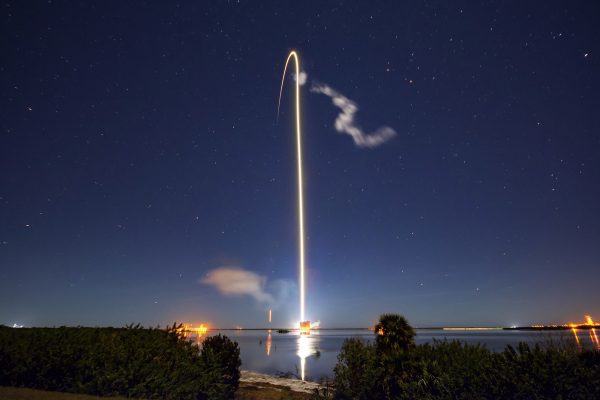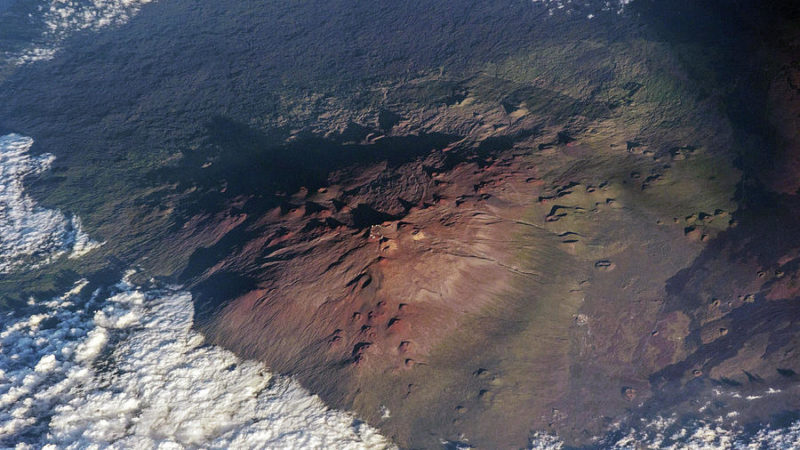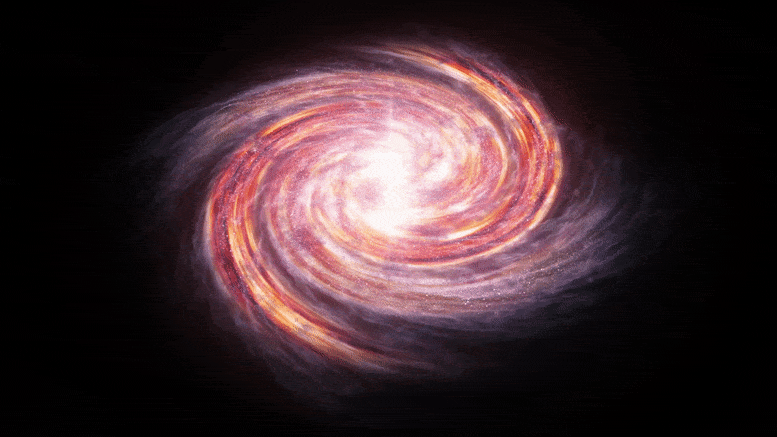Elon Musk’s Starlink is having a pernicious effect on astronomy – Inverse
As Elon Musk’s SpaceX launches yet another batch of 60 Starlink internet satellites into low-Earth orbit this weekend, astronomers on the ground are becoming increasingly worried about the mega-constellation’s affect on our ability to observe the universe.
The upcoming launch, scheduled for 5:35 am Eastern on March 14 from the Kennedy Space Center in Florida, is just the sixth batch of Starlink satellites, bringing their number to 300. It is just one of a number of launches planned for 2020 — ultimately, SpaceX wants to add 180 more satellites to its growing constellation by the end of the year.
These are just a tiny fraction of all the satellites that SpaceX plans to send into space, however. In total, Elon Musk wants to launch up to 42,000 satellites into space.
But this artificial constellation is getting in the way of our observations of the real stars and galaxies that make up our cosmos. The satellites already in place have started interfering with astronomical observations from Earth and a new study published this month reveals why astronomers are increasingly worried about each new batch.
Part of the reason why Starlink satellites pose such a threat to astronomy is down to their design. The satellites are very close to the Earth, at around 200 miles away, and remain in the same position in our skies. They have to be, if they are to provide the promised high-speed internet connection.
But that also means they present a growing physical barrier for our ground observatories, clogging up our telescopes’ cameras and ruining astronomical observations.
Standing in the way
In the study, published in the journal Astronomy & Astrophysics in March, astronomers from the European Southern Observatory (ESO) measured the effects of satellite constellations on telescope observations.
They found that satellite constellations would do the greatest damage to wide-field surveys of the cosmos, such as those conducted by the ESO’s Very Large Telescope, which is in the Atacama desert in Chile. The ESO researchers found that there will be 250 of Musk’s bright satellites above the horizon, in an area where many of the agency’s astronomical observations take place.
As a result, as many as 3 percent of long exposure observations — such as whole sky surveys — would be totally ruined during twilight hours.
The future looks even more bleak for other observatories.
Some 30 to 50 percent of exposures from the United States’ National Science Foundation’s Vera C. Rubin Observatory, currently under construction in Chile, will be severely affected. When it comes online, the observatory is supposed to help spot supernovae and potentially dangerous asteroids — but Starlink could (literally) stand in its way.
The new research backs up a February 2020 statement from the International Astronomical Union, which warned wide-field astronomical observations would be “severely affected” by the satellites.
The Union has had its eyes on the satellites since June 2019, modeling the frequency, location, and brightness of a sample of 25,000 satellites.
“Apart from their naked-eye visibility, it is estimated that the trails of the constellation satellites will be bright enough to saturate modern detectors on large telescopes,” the agency said.
“Wide-field scientific astronomical observations will therefore be severely affected.”
The satellite constellation is particularly “worrisome,” the agency said, because they may also interfere with ground-based astronomy, radio, optical, and infrared observations. That means astronomers will need to find ways to mitigate the satellites’ effects in order to continue with their work — and that costs money and resources.
SpaceX versus space science
To try and limit the future damage from these constellations, the Union is calling for international guidelines to regulate the brightness of man-made objects in the sky.
The Union and the American Astronomical Society are working with SpaceX to directly mitigate the effects of the satellites. In December 2019, the Society released a statement saying that they are in discussion with Elon Musk’s company to try and reach an agreement.
Meanwhile, the ESO suggests the pernicious effects of the satellite constellation may be reduced by making changes to its telescopes, but that comes at a cost. Instead, the observatory is encouraging the space industry to make the satellites darker so they interfere less with observations.
SpaceX is also testing out its own way of tamping down the ill-effects of its satellites. One satellite included in a 60 satellites launched in January was outfitted with a non-reflective coating at the bottom to reduce its brightness as seen from Earth.
“We want to make sure we do the right thing, to make sure little kids can look through their telescopes. It’d be cool for them to see a Starlink. I think that’s cool. But they should be looking at Saturn and the Moon,” Gwynne Shotwell, president and chief operating officer at SpaceX, said during a meeting at the time with reporters at the company’s headquarters in Hawthorne, California.
But that was just a test. It remains to be seen if the company privileges its own ambitions above those of scientists here on Earth.
Abstract: The effect of satellite mega-constellations on astronomical observations in the visible, near-infrared, and thermal infrared domains is estimated using a simple methodology, which is applied to ESO telescopes and instruments as examples (radio and (sub-)millimetre domains are not considered here). The study considers a total of 18 constellations in development by SpaceX, Amazon, OneWeb, and others, with over 26 thousand satellites, constituting a representative distribution. This study uses a series of simplifications and assumptions in order to obtain conservative, order-of-magnitude estimates of the effects: the satellites are assumed to be uniformly spread over the Earth’s globe, and their magnitude is estimated using a simplistic model calibrated on actual observations. The effect on various types of ground-based telescopic observations is estimated using a geometric probabilistic approach. The ‘trains’ of very-low altitude satellites typically observed immediately after launch are extremely bright due to their very low orbit. They also fall very quickly in the shadow of the Earth after sunset. However, this initial bright state is not considered further, as the satellites quickly disperse into their higher altitude orbits. The number of illuminated satellites from the constellations above the horizon of an observatory ranges from approximately 1600 immediately after sunset, decreasing to 1100 at the end of astronomical twilight, most of them (∼ 85%) close to the horizon (below 30◦ of elevation). The large majority of these satellites will be too faint to be seen with the naked eye: at astronomical twilight, 260 would be brighter than magnitude 6 (i.e. visible in exceptional conditions), 110 brighter than 5 (i.e. visible in good conditions). Again, most of them (∼ 95%) will be close to the horizon (below 30◦ of elevation). The number of naked-eye satellites plummets as the Sun reaches 30–40◦ of elevation below the horizon. Specular flares and occultations by satellites are expected to cause only negligible effects on telescopic astronomical observations. The light trail caused by the satellite would ruin a small fraction (below the 1% level) of telescopic exposures using narrow to normal field imaging or spectroscopic techniques in the visible and near-infrared during the first and last hours of the night. Similarly, the thermal emission of the satellite would affect only a negligible fraction of the observations in the thermal infrared domain. However, wide-field exposures and long medium-field exposures would be affected at the 3% level during the first and last hours of the night. Furthermore, ultra-wide imaging exposures on a very large telescope (where saturation of the satellite trails has a ruinous effect on the detectors, such as those from the National Science Foundation’s Vera C. Rubin Observatory, formerly known as LSST), would be significantly affected, with 30 to 40% of such exposures being compromised during the first and last hours of the night. Coordination and collaboration between the astronomical community, satellite companies, and government agencies are therefore critical to minimise and mitigate the effect on astronomical observations, in particular on survey telescopes.






